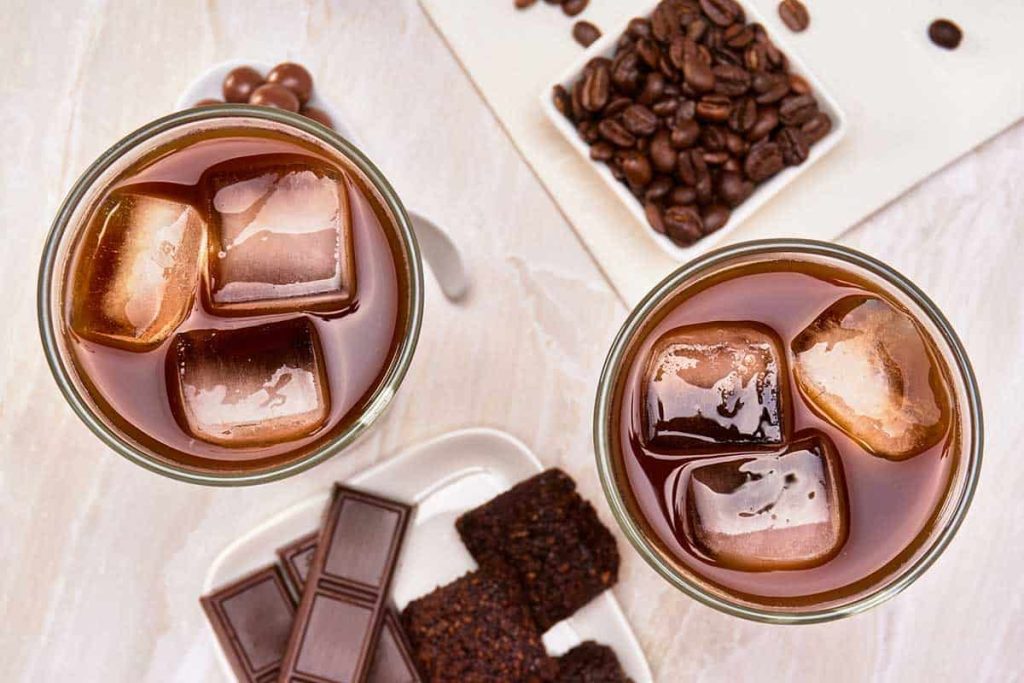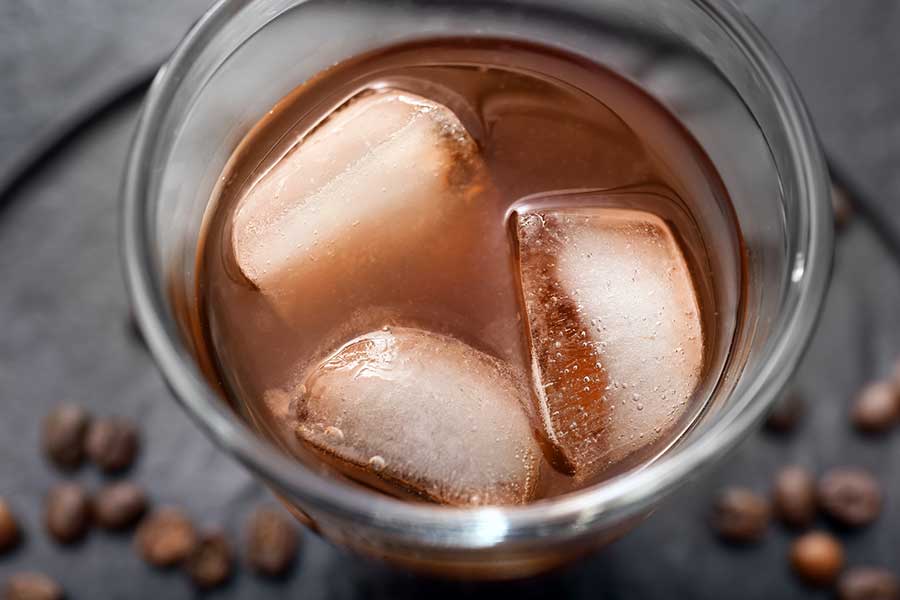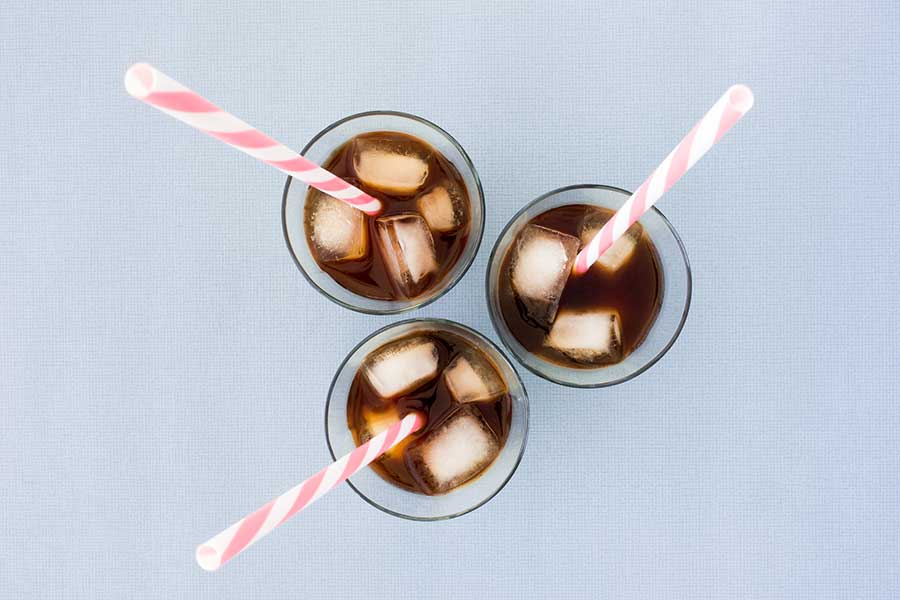How to Use Cold Brew Coffee Concentrate (8 Ways)

Cold brew concentrate may just be the best thing you haven’t explored yet. It’s underrated by many, yet its versatility is unmatched. I would say once you learn how to use cold brew concentrate, you will never go back.
Imagine an ingredient that could make your breakfast more fun and refreshing, turn your lunch hour snack into an extremely delicious bite, and spice up your evening drinks. Cold brew concentrate is the answer, but you may never make the most of it unless you learn its applications.
Know which cold brew coffee makers to use as well just in case you decide to make the concentrate yourself.
I spoke to coffee lovers, coffee shop owners, professional cooks, and foodies and realized this is how you can use the cold brew concentrate in your refrigerator.
Here’s How to Use Cold Brew Concentrate
1. Cold Coffee
No other use for cold brew concentrate is as straightforward as making cold coffee. Here’s how:
Place a few ounces of your cold brew concentrate in a glass or cup, add some cold water, then fill it up with ice. A 1:1 ratio with water usually does the trick, depending on your tastes. The resulting beverage will be a sweet, smooth cup of strong black coffee.
Sounds like iced coffee, right? No. The taste isn’t the same as that of iced coffee made from a hot brew. Cold-brew concentrate makes a smooth, sweet beverage that isn’t as acidic as iced coffee from a hot brew.
The best part is that you can keep adjusting the ratio until you arrive at a taste you feel is perfect. If adding water isn’t enough for your preferred taste, you can add chocolate syrup or a splash of cream to sweeten your cold brew.
2. Hot Coffee
This use is straightforward too, but it’s unknown to many.
Take a few ounces of cold brew concentrate again, but this time around top it up with boiling hot water instead of cold. You can vary the concentrate to water ratio until you find the ‘sweet spot’ for your desired taste with this method too, but beware that this will affect the warmth of your beverage as well as the flavor.
For instance, 3 ounces of cold brew concentrate and seven ounces of water will yield hotter coffee than 4 ounces of concentrate and 3 ounces of water. It’s easy enough to fix this, though. While not normally required, you can heat the concentrate before mixing it with hot water in instances where the ideal ratio cannot produce a hot enough beverage.
3. White Coffee
Cold brew concentrate is a popular ingredient in making sweet, tasty, white coffee. The steps to making one are pretty similar to those of preparing hot or cold coffee, but the ratio is different. Keep it 1:1 for this drink, but instead of mixing with water, use milk!
For warmer days, it would be best to use chilled milk and some ice cubes. Hot milk, on the other hand, suits colder days or wintertime. You can even pour that mixture over granola or cereal to make your breakfast more fun, tasty, and refreshing.
4. Cold Brew Cocktails
Cocktails are a special breed of drinks. For starters, know that a lot of creativity goes into making one. Basically, you have to blend and balance a variety of tastes to make your desired drink.

Coffee cocktails aren’t a new thing. Any classic cocktail you can think of probably has its coffee version. From espresso martinis to Irish coffee, the choices are endless.
Cold brew concentrate has long been used to make cocktails as well. Cold brew martinis, cold brew white Russians, and cold brew coffee Negroni are some of today’s popular caffeinated cocktails. You can find the recipes online if you are inclined to give this a try.
5. Cold Brew Soda
When water–hot or cold–doesn’t cut it, you might want to try adding soda water; however, it’s not as straightforward as adding plain water to your concentrate.
First, get the ratios right. Specifically, know how much cold brew concentrate to use. 1 ounce of concentrate to three ounces of soda water is the sweet spot for many. Mix them up and enjoy!
You can also go the extra mile and customize your drink. Lemon juice and fresh mint leaves are popular additions for freshness, but there’s no limit to what you can add. Gather all the syrups and other tasty items you can find and invent your own drink.
You can check some cold brew soda recipes online for inspiration.
6. Smoothies
Few food ideas would beat a smoothie for breakfast, but no other combination is as refreshing in the morning as a smoothie mixed with cold brew concentrate.
Some foodies dilute the concentrate first before adding it to their smoothie. Others mix the smoothie directly with one shot or two of the concentrate. Either method does the trick, but keep in mind that diluting the concentrate first will give you a thinner, stronger-flavored smoothie since there’s no added water in the recipe.
As for which smoothies to use, the possibilities are endless, but there’s one you can hardly go wrong with; mix bananas or berries with peanut butter and chocolate. Another recipe calls for oats, honey, and bananas/berries. Top up either of these mixtures with your cold brew concentrate and enjoy.
There are also plenty of coffee smoothie recipes online you can check out for ideas.
7. Cold Brew Mocktails
Mocktails mimic cocktails in many ways, from complexity to presentation, but there’s one exception: liquor. That’s where they draw the line, but everything else goes.

Before I get into the recipes, first understand that the flavors in your cold brew concentrate will influence the end result. Some coffees are chocolatey and deep, others are fruity and light. Pay attention to these tastes to be sure that they get along with the ingredients in your select recipe.
Don’t forget that the difficulty of making a mocktail is no different from that of a cocktail. You have to get the ratios right first before going on to balance the tastes.
Start by familiarizing yourself with simpler recipes like cold brew tonic, cold brew sour, High Plains tonic, or coffee mint julep before advancing to cold-fashioned, virgin espresso martini, and other complex recipes.
8. Dessert
Cold brew concentrate holds a rich chocolate flavor that has turned out to be a significant ingredient for desserts. You can hardly miss chocolate-flavored ice creams, pops, cakes, brownies, bread, or cookies at a food market.
You don’t have to make a trip to the market or wait for a special occasion in order to treat yourself to chocolate-flavored goodies, though. You can do it from home!
The simplest option is to pair the concentrate with ice cream. Take things to a whole new level thereafter by trying cold brew coffee dessert recipes that pair it with banana bread, brownies, or chocolate chip cookies.
Is that all? Definitely NO! You can use cold brew concentrate in many more ways than those we have mentioned. Some people use it as an ingredient in preparing barbecue sauce or to marinate steak or chicken. Others use it for baking. It all depends on how creative you can get with it.
FAQs About Cold Brew Concentrate
Can you drink cold brew concentrate straight?
You can drink your cold brew straight just like you would a shot of espresso. Do it in moderation, though, because after all, this is a concentrated product. Too much of it could cause anxiety, headache, respiratory issues, trouble sleeping, chest pain, and other issues associated with excess caffeine.
You can dilute it, too, but be careful not to make it too watery or too strong for your liking. You actually have to know how much cold brew concentrate to use. Mix equal parts concentrate and water to start.
What is the difference between cold brew and concentrate?
Cold brew is created by steeping coarsely ground coffee beans in cold water for an extended period, producing a smoother and less acidic flavor. Cold brew concentrate is derived from the same steeping process but employs a high coffee:water ratio, resulting in a concentrated form that is intended to be diluted before consumption. When diluted, the cold brew concentrate becomes the ready-to-consume cold brew coffee. Alternatively, a much lower coffee:water ratio can be used to make a cold brew coffee that is ready to drink.
Another difference between the two is that concentrated coffee is stronger and has more caffeine than a similar amount of cold brew. Diluting the concentrate with an equal amount of water lessens the bold taste and reduces the caffeine level by half.
How much cold brew concentrate should I drink?
Because of higher caffeine levels in cold brew concentrate, it would be best to drink two cups or less per day. For the majority of healthy adults, 400 milligrams a day is the safest limit. Anything above that could subject you to the side effects of excess caffeine.
How strong is cold brew concentrate?
Cold brew concentrate often uses any ratio between 1:4 to 1:5. One ounce of concentrate and 4 ounces of water makes a potent brew. For starters, this is the recommended ratio you should experiment with.
Drink Up!
Cold brew concentrate is one of the most versatile coffee products available. Once you learn its many uses, it becomes easier to make the most of it. Get creative with some of the recipes and you might just end up with a customized drink that could win you trophies in competitions such as the Coffee in Good Spirits Competition.
You have the option to make the concentrate at home or buy a premade product from a coffee shop; however, I would recommend that you make cold brew concentrate at home because this gives you the freedom to pick coffee beans that go along with your preferred recipes and also vary the strength of your concentrate.
That said, I have to admit that some options such as cocktails or mocktails might be complex to execute, so before you try them, take time to learn and master the steps.
To wind up remember these three points:
- Cold brew concentrate is a strong drink that should be taken in moderation.
- There’s no limit to how creative you can get with your cold brew concentrate recipes.
- Make cold brew concentrate at home for the most satisfying outcome.
Owen is a writer and editor at Caffe Streets who considers himself a coffee fanatic. He spends his time researching and testing different coffee beans and brewing methods and sharing what he learns with others.





